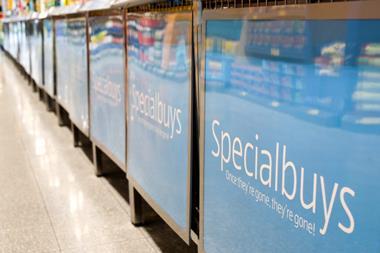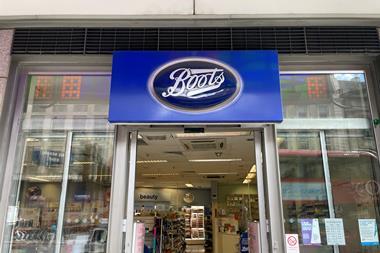Price hikes for cocoa and sugar mean hot chocolate fans could soon be paying more for their drinks. But for how long, asks Liliana Gonzalez of Mintec
The price of chocolate drinks is coming under pressure as cocoa powder and sugar become more expensive on the world markets.
Over the past few months, the price of cocoa powder has been steadily increasing and sugar prices have followed suit, propelling the price of chocolate raw materials to record levels.
Cocoa beans are ground to make cocoa butter and cocoa powder. Ninety-five per cent of all butter produced is used to make chocolate, while cocoa powder is used in flavourings, baking products and beverages. Cocoa butter is usually the more expensive derivative, but demand for powder has meant powder prices are currently higher than those for butter about £3,000 per tonne, 32% higher than at the start of 2010 and 11% higher than current cocoa butter prices.
Many of the recent price hikes are attributable to supply. For the 2009/10 season, cocoa bean production totalled 3.5 million tonnes, down 0.2% on the previous season. The resulting tightness in supply saw cocoa bean prices rise steadily during the first part of 2010 until, in June 2010, increased activity from commodities speculators pushed prices up to their highest levels in more than 30 years. In June, cocoa bean prices were 45% higher than they were the same time in 2009.
The situation stabilised somewhat during the second half of the year, amid improved production forecasts for cocoa producers in West Africa. Good weather on the Ivory Coast had seen forecasts lifted to 1.3m tonnes, up 8% on last season. Despite this, arrivals at Ivorian ports in October and November were lower than expected due to disruption caused by the country's chaotic general election.
There has been an increase in cocoa grinding since the middle of the year, when bean prices started decreasing again. Cocoa grindings in North America rose by 1.7% to 120,495 tonnes, but over the past quarter, European grindings have fallen 4% year-on-year to 331,182 tonnes, reducing the EU supply.
World sugar prices have also been under pressure this year, with prices reaching record highs in November due to increased concern over sugar cane supplies in 2010/11. Prices on LIFFE reached $733 per tonne, $10 higher than the peak seen in January this year.
Smaller than anticipated cane crops this season in Brazil as well as lower sugar beet crops in Europe and Russia have led to increased speculator activity. However, India has had a surplus crop this year, with sugar production expected to reach 25.5 million tonnes, up from 18.8 million tonnes last season. This could help ease global supply concerns as the country is likely to return as an exporter.
The Brazilian harvest is expected to be completed by early December, in contrast to last year when crushing continued into the new year. The dry weather is likely to reduce sugar cane yields for 2010/11 but should at least partially be offset by higher sucrose levels.
The 2010/11 crop forecast indicates a better supply scenario for the main cocoa foods and drinks raw materials, but as chocolate consumption is increasing faster than production, prices for raw materials might not ease quickly.
The price of chocolate drinks is coming under pressure as cocoa powder and sugar become more expensive on the world markets.
Over the past few months, the price of cocoa powder has been steadily increasing and sugar prices have followed suit, propelling the price of chocolate raw materials to record levels.
Cocoa beans are ground to make cocoa butter and cocoa powder. Ninety-five per cent of all butter produced is used to make chocolate, while cocoa powder is used in flavourings, baking products and beverages. Cocoa butter is usually the more expensive derivative, but demand for powder has meant powder prices are currently higher than those for butter about £3,000 per tonne, 32% higher than at the start of 2010 and 11% higher than current cocoa butter prices.
Many of the recent price hikes are attributable to supply. For the 2009/10 season, cocoa bean production totalled 3.5 million tonnes, down 0.2% on the previous season. The resulting tightness in supply saw cocoa bean prices rise steadily during the first part of 2010 until, in June 2010, increased activity from commodities speculators pushed prices up to their highest levels in more than 30 years. In June, cocoa bean prices were 45% higher than they were the same time in 2009.
The situation stabilised somewhat during the second half of the year, amid improved production forecasts for cocoa producers in West Africa. Good weather on the Ivory Coast had seen forecasts lifted to 1.3m tonnes, up 8% on last season. Despite this, arrivals at Ivorian ports in October and November were lower than expected due to disruption caused by the country's chaotic general election.
There has been an increase in cocoa grinding since the middle of the year, when bean prices started decreasing again. Cocoa grindings in North America rose by 1.7% to 120,495 tonnes, but over the past quarter, European grindings have fallen 4% year-on-year to 331,182 tonnes, reducing the EU supply.
World sugar prices have also been under pressure this year, with prices reaching record highs in November due to increased concern over sugar cane supplies in 2010/11. Prices on LIFFE reached $733 per tonne, $10 higher than the peak seen in January this year.
Smaller than anticipated cane crops this season in Brazil as well as lower sugar beet crops in Europe and Russia have led to increased speculator activity. However, India has had a surplus crop this year, with sugar production expected to reach 25.5 million tonnes, up from 18.8 million tonnes last season. This could help ease global supply concerns as the country is likely to return as an exporter.
The Brazilian harvest is expected to be completed by early December, in contrast to last year when crushing continued into the new year. The dry weather is likely to reduce sugar cane yields for 2010/11 but should at least partially be offset by higher sucrose levels.
The 2010/11 crop forecast indicates a better supply scenario for the main cocoa foods and drinks raw materials, but as chocolate consumption is increasing faster than production, prices for raw materials might not ease quickly.















No comments yet